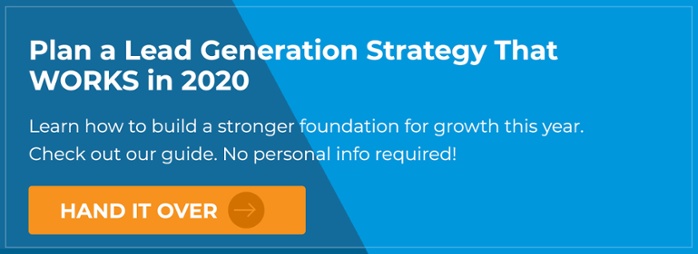
Creating “Amazing Content” Will Not Make Your Brand Successful
Patrick Dodge
Founder
I post on LinkedIn almost every day – sharing marketing tips, commenting on threads, and generally supporting my friends in the business community – and this week I decided to focus on the “top three challenges facing marketers this year” listed in HubSpot’s State of Inbound 2018 global report.
The number one priority is converting leads into customers, followed by increasing website traffic, and getting a greater share-of-wallet with existing customers.

Image courtesy of HubSpots "State of Inbound 2018" report.
I decided to write about each of these topics in-depth, highlighting one per day with my thoughts on how to overcome roadblocks to success. When I got to the one about increasing website traffic, things got interesting.
I wrote about “content shock,” a term Mark Schaefer invented years ago when he insightfully pointed out the natural disaster marketers were bringing on themselves: People are creating content at a pace and volume that exceeds our human capacity for consuming it.
In other words, a lot of great content out there is going unseen and unheard, which creates a “perfect storm” of problems:
1. It frustrates marketers who are pouring time and resources into inbound marketing and seeing little ROI.
2. The cost of inbound marketing goes up when everyone resorts to paid promotion on social media and search engines as the only way to get their content in front of an audience.
3. Discouraged brands give up before they can realize the benefits of helping customers solve problems.
I highlighted a few ways people can elevate their content above the noise without using ads (I am a firm believer in using paid promotion to boost results. But for this post, I want to focus on non-paid tactics).
I asked the community what they were doing to get around content shock. Here are a few responses:
"Writing better content.”
“Being purposeful with it, rather than creating content for content’s sake.”
“Being a curator of high-value relevant content to drive traffic…”
Oh, boy...

None of these responses are wrong. On the contrary, they are very much right, but they made me realize too many people think the key to overcoming a saturated internet is creating BETTER content.
Folks, that just ain’t enough. Not today.
Yes, of course you should always put out the highest quality stuff with the greatest value to your audience. But that does not mean you will succeed.
You might be creating the best content in the world, but if you can’t get it to move, you are shouting into the wind.
There are a few solutions to this problem, and it requires more than just being AMAZING.
Expand Your Audience Through Influencers.
No matter how successful you are at impacting an audience, someone out there is doing it better.
Most industries have “micro-influencers” that have become the voice of authority on important topics, people your customers look to for advice and guidance on important topics.
These are people you need to start building a relationship with.
As we mentioned in our post about how small brands can get started with influencer marketing, B2B influencers are constantly looking for ways to grow their following and deliver fresh, innovative ideas.
This is really hard to do, but after a certain point their authority surrounds them like a...sweet perfume.

Maybe you know what it feels like to work for weeks on a blog post, pack it with useful tips and information, and publish it yoonly one or two likes and shares. Then you see a tweet from an influencer that repeats some banal cliche like “Content is King,” and it gets hundreds or thousands of responses.
Nothing on heaven or earth will ever drive a marketer crazier than this, but right or wrong, that’s the power of influence.
Related: How Influencer Marketing Changed My Lead Generation Strategy
Through hard work and intense focus, these people have gained the trust and admiration of your would-be customers. Now is the time to start building a relationship with them. Help them by starting authentic conversations with their followers. Share their content and spread the word.
Apps like Onalytica will monitor the content they share and conversations they have, giving you clues about their priorities. Then, when the moment is right, approach them with a carefully thought out collaborative project that will benefit your brand and theirs.
Whatever you pitch, make sure it’s relevant to interests they've made known in their content and conversations.
If they commit, put everything you’ve got into the plan. Remember, this is an opportunity to introduce your company to thousands of people. You want to make on outstanding impression on them, as well as the influencer you are partnering with.
What is “Content-Based Networking?”
The next wave of B2B of lead generation is just gaining momentum, and one of the most interesting new approaches I’ve heard of runs parallel with the influencer marketing movement.
I’ve known James Carbury of Sweet Fish for quite a while on LinkedIn. He’s a whip-smart marketer and entrepreneur whose company specializes in helping B2B companies launch and manage podcasts. As he staked a claim in this space, James discovered a strategic opportunity that most businesses haven’t considered with podcasts.
As you might expect, podcasts take a while to produce ROI for a business. The Sweet Fish team figured out that by inviting guests that match their buyer persona profile, businesses could start relationships with prospects while also introducing them to new audiences in the show.
And it doesn’t end there. Podcasters are also repurposing the audio into blog articles, social media posts, infographics, and videos to maximize reach.
Sweetfish estimates that more than 50 percent of their guests on their B2B Growth podcast turn into customers. That’s a huge number, and it’s prompted them to make this strategy into a category. They call it content-based networking.
This approach is completely unlike other business building tactics. There’s nothing manipulative or intrusive about it. You are simply helping a business reach more people, share best practices they’ve learned, and make new connections. During the process, you may get an opportunity to learn about their challenges and offer a few solutions.
I’m not suggesting you immediately pitch every guest on your show – that will backfire in a hurry. I’m saying you should learn as much as you can about your guests, and when you see an opportunity to help them, ask if they’d like to hear a few recommendations in separate conversation.
This is soft-selling the way it should be done – two people talking shop, getting to know each other, and exploring the possibilities of working together. Is there a better way to start a relationship?
Collaboration is fast becoming the most important part of content amplification and lead generation today. By working with influencers, prospects, and other members of your online community, you will open new doors and find new, fertile ground for your content.
The saying is true: A rising tide lifts all boats. Brands no longer need to work in a vacuum to build authority. Let’s find ways to help each other. It sure beats creating “amazing content” that no one ever sees.
Sep 11, 2018 7:46:44 PM

